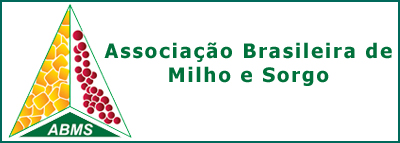CHARACTERIZATION OF FUNGAL ISOLATES FROM PYCNIDIA AND PSEUDOTHECIA FROM LESIONS OF PHAEOSPHAERIA LEAF SPOT IN MAIZE
DOI:
https://doi.org/10.18512/1980-6477/rbms.v1n03p%25pKeywords:
Zea mays, Phaeosphaeria maydis, Phyllosticta, isoenzimas, RAPD.Abstract
Phaeosphaeria leaf spot, a maize disease of occurrence in Brazil, can reduce the grains production of susceptible cultivars up to 60%. The causal agent of the disease was described on the basis of visual descriptions of sexual and asexual reproductive structures (pseudothecia and pycnidia) found in the lesions, and identified as being the fungus Phaeosphaeria maydis, imperfect form Phyllosticta sp. However, the isolation of this fungus is difficult and its inoculation in maize plants under controlled conditions has not been successful in the reproduction of the symptoms. In this work, isolates obtained from pycnidia and pseudothecia present in foliar lesions were compared using isoenzymatic (α and β esterases) and RAPD patterns, in order to determine whether these two states belong to the same etiological agent. These techniques clearly distinguished between isolates from pycnidia and pseudothecia, indicating that these structures belong to distinct fungal species, and not to the anamorphic and teleomorphic states of the same agent, as previously suggested. Based on morphological characteristics, the isolate from pycnidia was classified as Phoma tropica, an opportunistic fungus that colonizes pre-established lesions, and not as a Phyllosticta sp. as described initially.
Downloads
Published
How to Cite
Issue
Section
License
Authors retain copyright and grant the journal right of first publication with the work simultaneously licensed under the Creative Commons Attribution License that allows the sharing of work and recognition of the work of authorship and initial publication in this journal.
Authors are able to take on additional contracts separately for non-exclusive distribution of the version of the paper published in this journal (eg, in an institutional repository or publish as a book), with acknowledgment of its initial publication in this journal.
Authors are permitted and encouraged to post their work online (eg, in institutional repositories or on their website) at any point before or during the editorial process, as this may leadto productive exchanges, as well as increase the impact and citation of published work.




